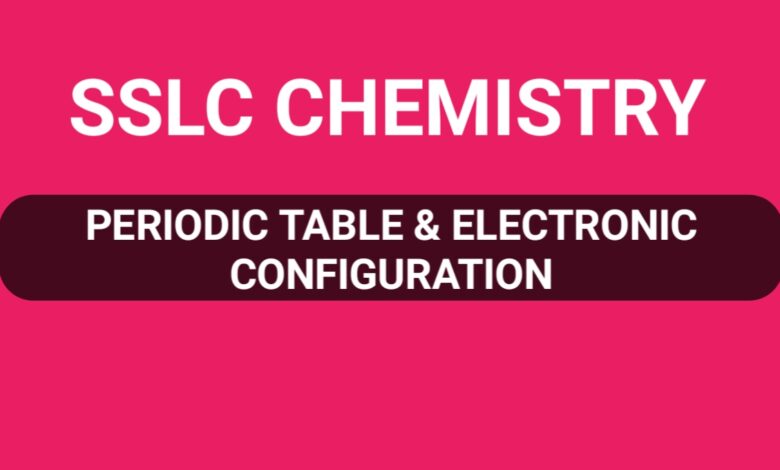
The basis of classification of elements in the modern periodic table is Atomic Number
When an electron moves away from the nucleus;
- Its energy increases
- The attraction between the nucleus and the electron decreases
Though the third shell (M) can accommodate a maximum of 18 electrons, the last shell cannot
accommodate more than eight electrons.
According to The Bohr model of an atom , electrons are revolving round the nucleus through fixed
circular paths called Orbits or shells. Since each electron is associated with a definite amount of
energy, these orbits are also known as Main energy levels. In these main energy levels, different
Sub energy levels (Sub shells )are assigned. Sub shells are named as s , p , d, f etc.
(s- sharp. p -principal. d- diffuse. f- fundamental)
Shapes of orbitals(Only for extra reading )
s Orbital is spherical
P sub shell has three orbitals. Px , Py and Pz. They are dumb bell shaped
The shell number and the total number of sub shells are same .
For eg: The first shell(K) has only one sub shell (1s) , the second shell (L) has two sub
shells (2s ,2p) and so on.
The sub shell is common to all shells is s subshell
Electrons occupy various sub shells according to the increasing order of their energies.
This is known as sub shell electronic configuration.
1s <2s <2p <3s <3p <4s <3d <4p <5s <4d< ..
Chromium and Copper show exceptional electronic configuration.This is due to,
the d sub shell can accommodate a maximum of 10 electrons. The completely filled configuration
(d 10 ) or the half filled configuration (d 5 ) of this subshell is more stable than the others
The block to which the element belongs will be the same as the subshell to which the last
electron is added. In the periodic table the elements are arranged in s, p, d and f blocks
s Block Elements
The elements in which the last electron enters into the s sub shell of the outermost shell are called s
block elements. These include elements of group I (alkali metals) and group II (Alkaline earth
metals)
- In chemical reactions, s block elements donate electrons . Hence they show positive oxidation
states.
Alkali metals donate one electron. Hence they show +1 oxidation state.
Alkaline earth metals donate two electron. Hence they show +2 oxidation state.
The group number of s block elements
For s block elements the number of electrons in the outermost s subshell will be the group number.
characteristics of s block elements (Summary)
- Metallic nature.
- Low ionization energy.
(Only a small amount of energy is needed to remove a weakly bonded electron ) - Low electro negativity. (Tendency to attract electron is less as they donate electrons)
- Lose electrons in chemical reactions.
- Compounds are mostly ionic .
- Elements of group 1 have greater reactivity in their respective periods.
- Oxides and Hydroxides are basic in nature.
- Highest atomic radius in the respective periods .
- Reactivity increases down the group
‘p’ block elements
- The elements in which the last electron goes to the p subshell of the outermost shell
are called p block elements. - The p block consists of elements of group 13 to 18.
- Elements of solid , liquid and gaseous states at room temperature are present in p block.
- Most of the elements of group 18 are chemically inert.
- Among the p block elements, the highest reactivity is shown by group 17 elements.
- They show higher ionisation energy and electronegativity than s block elements.
- Metallic Character increases down the group (Decreases along a period).
Group number of p block elements
- The group number of p block elements can be obtained by adding 10 to the total
number of electrons in the s and p sub shell of the outermost shell.
(s+ p+10)
Elements of s and p blocks are collectively called representative elements.
‘d’ block elements
- The elements in which the last electron goes to the d sub shell of the Penultimate shell
are called d block elements. - The d block consists of elements of group 3 to 12 of the periodic table.
- They are also known as Transition elements.
(The word transition refers to a slow but steady change from one to the other) - These are all metals
- They show similarity in properties not only in a group but also in a period
- The show variable oxidation states.
- Most of their ions and compounds are coloured.
- Many transition metals or their compounds are good catalysts.
Finding the group of d block elements
The group number of the d block elements will be the same as the sum of electrons in the
outermost s subshell and the number of electrons in the preceding d subshell. (s+d)
Valency of an element is the number of electrons gained , lost or shared by an atom during
chemical combinations. It is considered to be the combining capacity of the element.
Compounds of transition elements are used for giving colour to glasses and in oil paintings
The ‘ f ‘ block elements
- The elements in which the last electron enters into the f sub shell of the ante penultimate shell
are called f block elements. - The f block elements are the elements coming after lanthanum and actinium and
are placed in two rows at the bottom of the periodic table. - They are arranged in the 6th and 7th period of the periodic table in two separate raws.
First raw is called Lanthaniods. The second raw is called Actionids. - Like d block elements, they also show variable oxidation states.
- Most of the actinoids are radioactive and are artificial elements.
- Uranium (U) ,Thorium (Th), Plutonium etc are used fuels in nuclear reactors.
- Many of them are used as catalysts in petroleum industry.